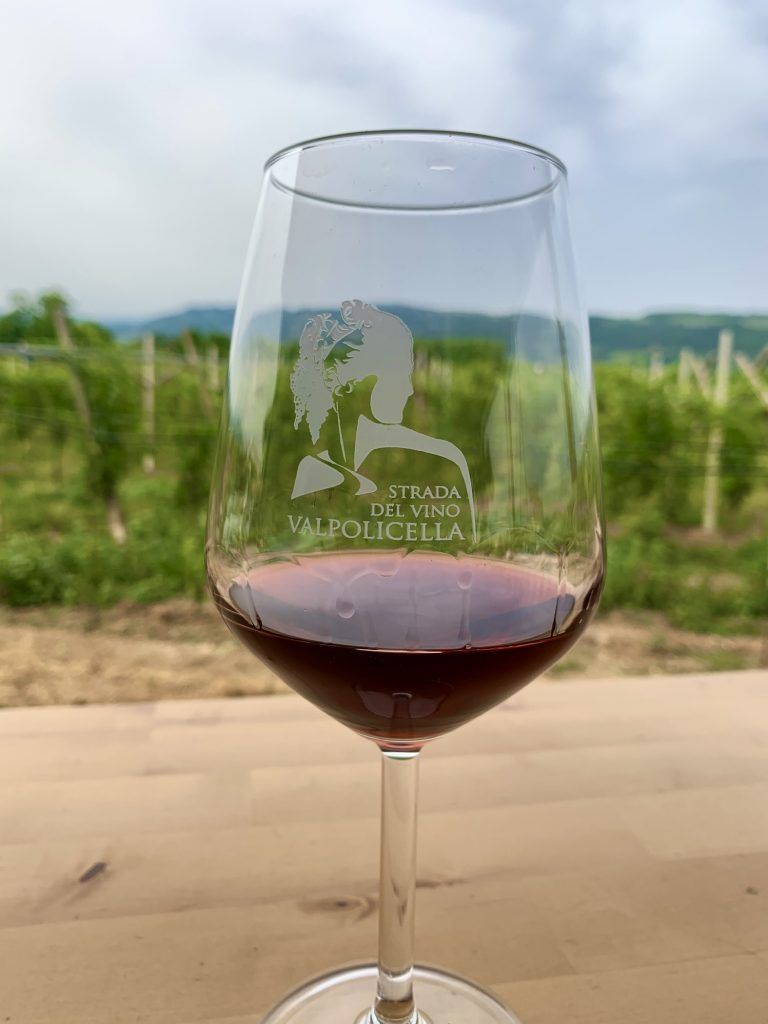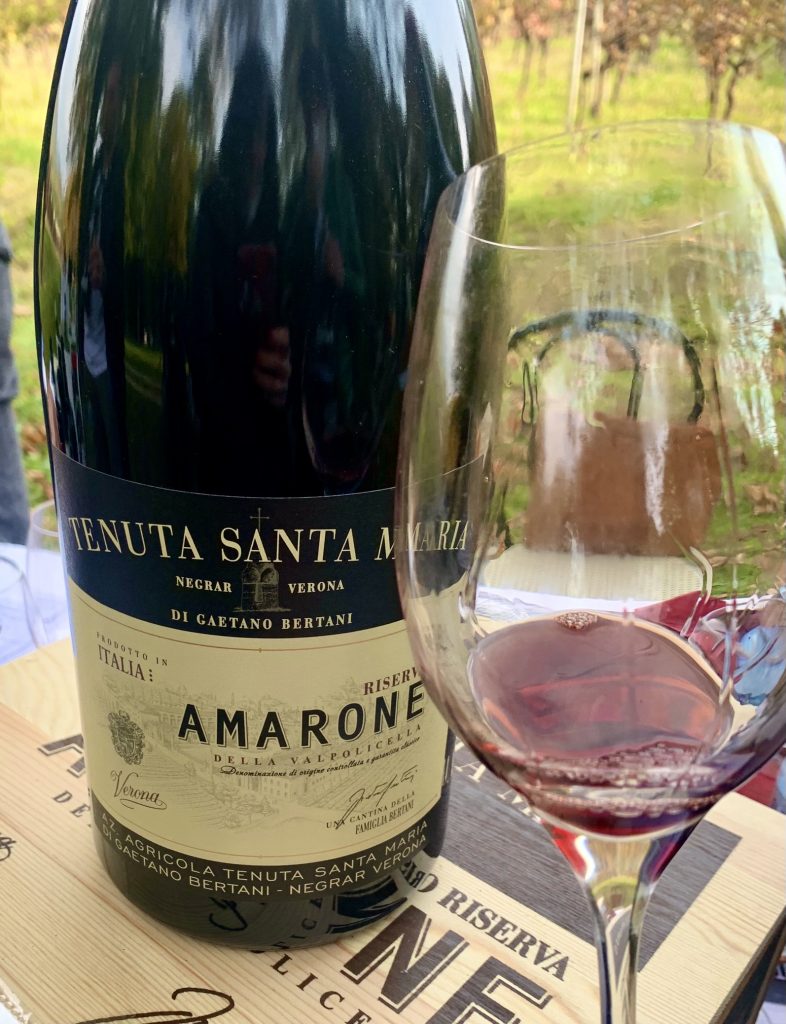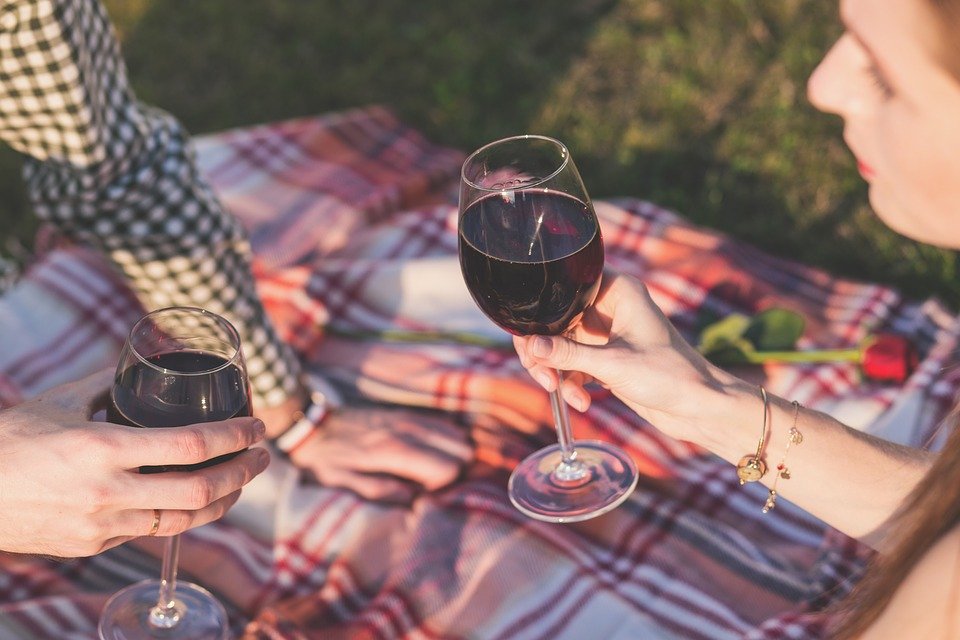Valpolicella is more than a wine, it’s is Veneto’s prominent red-wine area located northwest of Verona, Italy, a land devoted to grape growing since the Iron Age, according to the fossilised remains of prehistoric vine leaves and grape clusters.
The name of Valpolicella has ancient origins: it stems from the Latin “Vallis-polis-cell”, or “valleys from many wineries” to the Greek language “polyzelos” as a land “with many fruits”.
The star of the area is Amarone della Valpolicella DOCG, which is widely considered one of Italy’s best wines and may be the most famous wine of the region, but it’s not the only one.
This northern Italy’s land is home to five distinct denominations coming from five Veronese valleys that cover the same vineyards and share the blend of grape varieties used, but make different styles of red wines: Corvina, Corvinone, Molinara, Rondinella are the indigenous vines that create the blend of Valpolicella DOC, Valpolicella Superiore DOC, Valpolicella Ripasso Superiore DOC, Recioto della Valpolicella DOCG, Amarone della Valpolicella DOCG.
The best zone for producing this reds is undoubtedly that of the “Classico”, in the hills due north of Verona, where you can find most of the historical cellars, an exceptional heritage of flavours, traditions and culture. The Valpolicella vini made using grapes from the foothills are labelled Classico DOC or DOCG while reds coming from vineyards in the other subzones will carry the valley name on the label.
Publicised by many authors, like in E. Hemingway’s book “Across the River and into the Trees” in which he main character always kept a bottle of Valpolicella close to him, the Valpolicella Classico DOC has moderate alcohol content, it’s fruity with light tannins and display red cherry flavors. It is also rarely oaked and made to drink immediately.
It is perfect for day-to-day meals if it has been recently bottled, whilst it can be a good choice for meaty or cheesy dishes if it is a Superiore (which needs a minimum of year of aging and at least 12% AVB) or Ripasso (a basic Valpolicella vino passed over the skins of Amarone and Recioto). Valpolicella Ripasso Classico Superiore DOC, considered as Amarone’s younger brother, is ruby-red colour with violet shades and it has red fruit, spice and sour black cherry bouquet.
Amarone della Valpolicella DOCG is a world-famous, unique red wine, produced according to a specific oenological technique with a long, established tradition (the grapes are partially dried indoors). Before the success of Amarone, Recioto della Valpolicella DOCG, the sweet quintessence of the land that was popular in Roman times, was considered as the most representative wine of the area. Its name was coined by the Veronese literate Girolamo Fracastoro, who named it after the ripest indigenous grapes’ bunches (called in the local dialect “recie”, with the meaning of “ears” due to the typical form of the upper part of the grape, the one that is most exposed to the sun and with the most sugar).
Vini della Valpolicella (as they are called in Italian) are timeless nectars to be savoured at all times. Their harmonious bouquet, freshness and red fruit taste make these wines an ideal match for every special occasion and a particularly fine accompaniment for all meat dishes, traditional Italian pasta and mature cheeses.
Wines labelled Amarone della Valpolicella DOCG are dry or off-dry, while Recioto DOCG is always sweet. Light-bodied red wines such as Valpolicella Classico DOC can be served slightly chilled (13° or 55°F) but medium and full-bodied reds of the other denominations are best enjoyed at room temperature (15-18 °C or 59-64°F). Serve Recioto at 16-18°C/60-64°F and open the bottle an hour before consuming.
Grapes
In Valpolicella more than one hundred autochthonous varieties of this denomination are historically grown. Over time, however, only some of these such as Corvina, Corvinone, Rondinella, Oseleta and Molinara were chosen for the reds production. Nevertheless, during the past years some wine producers have re-discovered some of the grapes that had been literally “forgotten”.
Within the different varieties, Corvina is the undisputed Queen, giving to these rossi a distinctive ripe cherry note, body and high acidity, yet it has a thin skin, moderate color, low to medium tannins. It also accounts for the majority of the blend in Amarone, according to the rules of the DOCG (disciplinare). However, a recent law update allows Corvinone (a different variety) to be used in an amount up to 45-95%. It has thick skin and juicy berries, so it is well adapted to the drying process.
In order to further increase the color and tannins of vini rossi Valpolicella, the other local grape vines can be added to the blend. Rondinella provides tannic structure, color, and a refined flower bouquet. Molinara contributes with tartness and a pungent character. Oseleta is one of the re-evaluated grapes mentioned before: it has small berries and it’s dark-skinned, producing a deeply colored wine with fresh fruit and good intensity and is becoming increasingly popular for that reason.
Varietal blends offer winemakers an added level of artistic freedom although it is necessary to respect the requirements established by the strict rules of the appellation.

Region
Valpolicella lies in the Veneto region, and it includes two subzones – Classico and Valpantena. The five communes – Negrar, Marano, Fumane, San Pietro in Cariano, Sant’Ambrogio – in the four valleys located northwest of Verona constitute Valpolicella Classica, accounting for 47% of the total area where the famous vini rossi are made. The most important vineyards are located on the valley slopes between 200-450 meters of altitude with some higher hills.
Directly east of Verona lies the flattest area called Valpantena (6% of the area) that is part of the Denomination of Origin (DOC). The rest of Valpolicella (so-called “allargata”) lies in the central plain, in the Illasi, Tramigna, Mezzane, d’Alpone e Squaranto Valleys. About half of the area’s vines today are in the hilliest part and are older plants, with the rest being newer vineyards, especially on the plains. The foothills in the north have limestone, clay and volcanic soils, which slow down ripening so the grapes have more acidity. The soils in the south are gravel and sand, which is warmer, so the grapes are fruitier with less acidity. This well impacts on the two zones wine styles, Classico being an area which often serves as a guarantee, while in Valpantena it’s the winery that makes the difference.
Since Amarone, Ripasso and Recioto all have significant sugar left over, keeping acidity in the grapes is key, hence the importance of large diurnal swings to encourage its preservation.
The flourishing viticulture of the area benefits from the protection granted by the Lessini Mountains to the North, the proximity to Lake Garda and the southern exposure of the hilly terrain and valleys that compose its territory.
Both areas can produce quality vini della Valpolicella, with two of the historical top producers (Quintarelli and Dal Forno) curiously located respectively in each of the subzones.
Process
The basic denomination of the area is Valpolicella DOC, which is a standard dry red wine made from the required blend. It has no particular aging requirements, unless it’s labeled Superiore, that for a Valpolicella means at least 0.5% higher alcohol content and 12-14 months of aging.
The majestic DOCG red wines of this region share a peculiar production technique based on grape drying, a viticulture method that has Etruscan roots: “appassimento” is the process used to obtain partially dried grapes to concentrate their acid, tannins, sugars and enhance their flavours.
In early autumn the grapes (picked early when they are still rich in acidity) are harvested by hand, selecting the healthiest and ripest ones for the DOCG wines. These superior bunches are laid in single layers on wooden trays or the more modern plastic cases (easier to clean), in the so-called “fruttaio” (local grape-drying room), with controlled airflow and temperature for at least 100 days. The fruit not destined to become Amarone or Recioto, will be used for Valpolicella, which is made from fresh clusters vinified in stainless steel vessels, producing young, vibrant, low alcohol wines, that can be released the spring after the harvest.
By the end of appassimento, the evaporation will have reduced the weight of the grapes by almost half and reach about 240 g/l of sugar.
Cool-temperature fermentation, which doesn’t get underway in the winter months, is carried out in stainless steel or barrels and followed by a 30 days maceration on the skins.
While for Recioto the grapes are so sweet that the fermentation stops naturally or is arrested by chilling the wine, leaving a substantial amount of residual sugar in it, for Amarone the fermenting wine keeps working until grape natural sugars have transformed themselves into alcohol. That’s why Amarone has a high alcohol content (from 14 to 17% ABV; if well balanced, however, the alcohol does not dominate), full body and strong structure with a violet bouquet and aromas of sour cherry, concentrated cooked red berries, chocolate and spices flavors.
Amarone is matured in botti (large casks) usually made of Slavonian oak or in French barriques. Today the minimum required aging is 24 months, although better producers age for 36 months or longer, and top, traditional producers like Dal Forno or Quintarelli choose six years or more of maturation.
Amarone has got a great ageing potential but is is also laborious and costly to produce for the local wineries or cantine Valpolicella, requiring multiple passes through the vineyard at harvest time and constant attention during the drying process.
When Amarone has completed fermenting, the winemaker may generate Ripasso with the homonymous method which promotes a second fermentation through the wine’s contact with warm dried grape skins (in a mandatory percentage of 10-15%) from which Amarone has been pressed. This practice increases slightly the alcoholic content and enriches the wine with a greater concentration of aromas and dried fruit complexity as a result. The wine is oak matured for 1 year and for a further six months in bottle before being marketed.
Recioto DOCG is produced with the same technique used for Amarone, with a late harvest and careful sorting. The grapes are hand collected and then left to dry for at least 120/130 days. Unlike Amarone, however, cool-temperature fermentation is stopped to allow that some of the sugar remains to yield a sweet and fragrant wine. Aging for 10-12 months takes place in stainless steel tanks and then for a short time in wooden barrels. A further 3-6 months of bottle aging usually follows.
The production technique of Amarone is thus substantially the same as Recioto, but he difference lies in the sugar content: the residual sugar of the Amarone is maximum 12g/l while for Recioto it is between 80 and 110 g/l.
Curious Facts
Local folklore attributes the origins of the name Amarone to a mistake in the bottaia, where a distracted winemaker left a barrel of Recioto ferment dry, hence the name from the word “amaro” to distinguishes it from the sweet wine of Recioto. This powerful rosso was first bottled in 1939 when the Cantina Sociale Valpolicella (today Cantina Negrar cooperative). Anyhow it was only in the 50s that a consistent fermentation to dryness was achieved thanks to the introduction of a specific yeast strain (Saccharomyces bayanus). Thanks to this and to Bolla’s export of Amarone in the USA, sales of this red rocketed.
More recently, it was Giuseppe Quintarelli, one of the most consequential local winegrowers, who set the bar for state-of-the-art production techniques, influencing other notable vignaioli such as Romano dal Forno and Tommaso Bussola, that are among the most influential producers of terroir-driven Amarone today.

Food Pairings
Valpolicella perfectly matches with Italian starters, pasta dishes and other Mediterranean specialties. Recommended with grill-roasting and oven-cooked white meats, it is great as a summer bottle with light fish courses such as tuna steak.
Ripasso red goes well with pork, veal, and poultry dishes but also with aged Gouda and blue cheeses like Gorgonzola, Stilton, Roquefort. Local Veronese often drink it as an aperitif with finger food and cured hams during the so-called “happy hour” standing with a glass in front of the many Osterias in the historical centre of Verona.
Amarone beautifully pairs with traditional dishes of Verona but also more modern Asian fusion cooking. It exhibits a wide variety of flavors that pair well with savory dishes, especially those made with an Amarone sauce like local traditional Veronese dishes such as Risotto all’Amarone or Brasato (stewed meat) all’Amarone. It is especially well-suited for pairing with red meat and traditionally in Verona with horse meat specialities such as Pastissada de Caval (horse meat stew). Mature and robust cheeses pair well with the king of Veronese reds.
Recioto is recommended with dry cakes or biscuits (sbrisolona, cantucci or zaletti – typical regional products) and with bitter chocolate. Another remarkable combination is to serve it with blue cheese, as well as with the Italian “mostarda” (sweet and spicy fruit pickles).
Try it out
Top Picks
Quintarelli Giuseppe Valpolicella Classico Superiore 2012
Quintarelli waved his magic wand over one of Italy’s most traditional wines and turned it into a luxury icon. Today, his Amarone can cost up to $400. Quintarelli is known for its meticulous and detailed work in both the vineyard and winery with up to 12 passes made when harvesting. Quintarelli is the ultimate traditionalist, aging Amarone for 6+ years. The first Quintarelli labels were handwritten by Giorgio Gioco, chef and owner of the 12 Apostoli, the historical restaurant in the heart of Verona.
This Superiore shows a remarkable elegance and finesse, with floral and fruity notes that start to give way to an explosive, rich, full bouquet. On the palate is supple, complex and elegant with pure depth of fruit. Iconic.
Quintarelli Giuseppe Amarone della Valpolicella Classico DOCG 2003, 2004, 2006
The Amarone is Quintarelli’s iconic wine. It is a magnificent red which reveals a note of ripe red and black fruits (cherry, plum, wild berries) and dried one (prunes, raisins, figs), notes of tobacco and vanilla. It’s beautifully structured for a long life.
Dal Forno Romano Monte Lodoletta 2012 (Valpolicella Superiore DOC)
Since his first 1980s vintage, Dal Forno has produced enormously successful Superiore, Amarone and Recioto thanks to a technologically advanced winery. His wines are intense and have purity of flavors, elegance and refinement.
This extraordinary Superiore, made from vines of Val d’Illasi (Monte Lodoletta), reveals fascinating aromas of ripe black fruit, dried black cherries, and charred oak hints. With firm tannins and a dense structure, a spiced-silky texture and a lingering finish.
Dal Forno Romano Monte Lodoletta 2008 (Amarone della Valpolicella DOCG)
This Amarone simply stands out, stemming from elected grapes combined with long drying and prolonged aging in barrique and in bottle.
Deep garnet red, it reveals candied plum and cherry fruit with a vanilla spice sweetness on the nose. On the palate is bold with a persistent flavour of cooked red fruit, sour red cherry with notes of chocolate and coffee. A gem.
Tommasi De Bvris Riserva 2008 (Amarone della Valpolicella Classico DOCG)
In the heart of the Tommasi historical cellar of 1969, you can admire the “Magnifica” barrel, the largest Amarone barrel in Slavonian oak in the world, which holds 333 hectoliters of the velvety divine nectar of Valpolicella. The vineyard known as la Groletta, in the municipality of Sant’Ambrogio, is considered the epitome of the Valpolicella Classico zone, thanks to the soil composition which reinforces the area’s characteristic aromas of ripe red fruit and intense dark spices. The “De Bvris” shows a bright and vibrant bouquet that is laced with sweet fruit, dried berry, dried earth, leather, spice, dark tar and licorice. The finish is supple and quite long. Very balanced, great intensity and complexity.
Bussola Vigneto Alto TB 2009 (Amarone della Valpolicella Classico DOCG)
Tommaso Bussola farms 7 hectares of Classico zone vines and crafts some of the most impressive, modern-style Amarone since 1983. Once a traditionalist, but today he ages his Amarone in barrels of small and big sizes and a choice of peculiar woods.
His Amarone from its top vineyard has a rich, complex nose of dried black cherry, plums, underbrush and loam. Concentrated and layered flavors revealing marasca cherries, jammy black fruit with cinnamon, cocoa and coffee notes.
Bussola Recioto Della Valpolicella Classico 2015
This Recioto has got a deep garnet red colour with violet hues. An intense fruity aroma of red fruits and sweet spices, coffee and bitter chocolate. A well balanced wine with some residual sugar that gives it a sweet, velvety, warm mouth feel with lovely hints of blueberries jam, cooked blackberries, cinnamon and vanilla.
Stefano Accordini Il Fornetto Riserva 2012 (Amarone della Valpolicella Classico DOCG)
From the highest vineyards in Valpolicella Classica, sitting at 550 meters of altitude, this is the Amarone for lovers of soft and lush jammy plum fruit married to notes of sweet fruit, dried berry, dried earth, leather, spice, clove, dark cherry, plus mocha. Complex, balanced, and delicious. The fine tannins give a solid backbone that will help this wine age carefully over the next few years.
Top Values
Bolla Le Poiane 2019 (Amarone della Valpolicella Classico DOCG)
A timeless myth, Amarone Bolla is the expression of tradition combined with modern, state-of the art winemaking. Made with 70% Corvina e Corvinone, 30% Rondinella this wine displays already an elegant complexity of terroir reflecting aromas of intense red fruits, high tannins with a pleasant touch of balsamic elements and a delicate spiciness on the finish.
Valpolicella Ripasso Bolla 2017 (Valpolicella Classico Ripasso Superiore DOC)
This Ripasso offers aromas of ripe red fruits and licorice giving a mouth feeling of velvet elegance and warmth. It’s well structured, persistent, and dynamic.
Latium Morini Campo León 2013 (Amarone della Valpolicella DOCG)
A splendid expression of Valpantena zone, this charming Amarone has richness of style, intense flavours of berries and plum, very persistent black fruit and cedar notes with velvet tannins, making it elegant and smooth. You better get one and taste it to experience a rich, elegant, juicy king of Valpolicella wine from an excellent winery at the best price.
Zenato Amarone della Valpolicella Classico DOCG 2016
The 2016 Amarone has a fruity bouquet of black prunes, currants and cherries in spirits, floral aromas and wood notes. Definitely good quality/price ratio.
Cesari Ripasso Bosan 2016 (Valpolicella Classico Ripasso Superiore DOC)
Sour and juicy black cherries, tobacco and peppery notes with dark chocolate undertones. Definitely to try.
Tenuta Sant’Antonio Monti Garbi 2017 (Valpolicella Ripasso Superiore DOC)
Home of the Castagnedi brothers, who started winegrowing in 1991 in the hilly side of Mezzane di Sotto, this Ripasso Superiore is a fine and richly textured Valpolicella, rich in cherry and dark berry fruit and a velvety touch in the mouth. It certainly impresses for its harmony and elegance at a very reasonable price.
© All rights reserved

